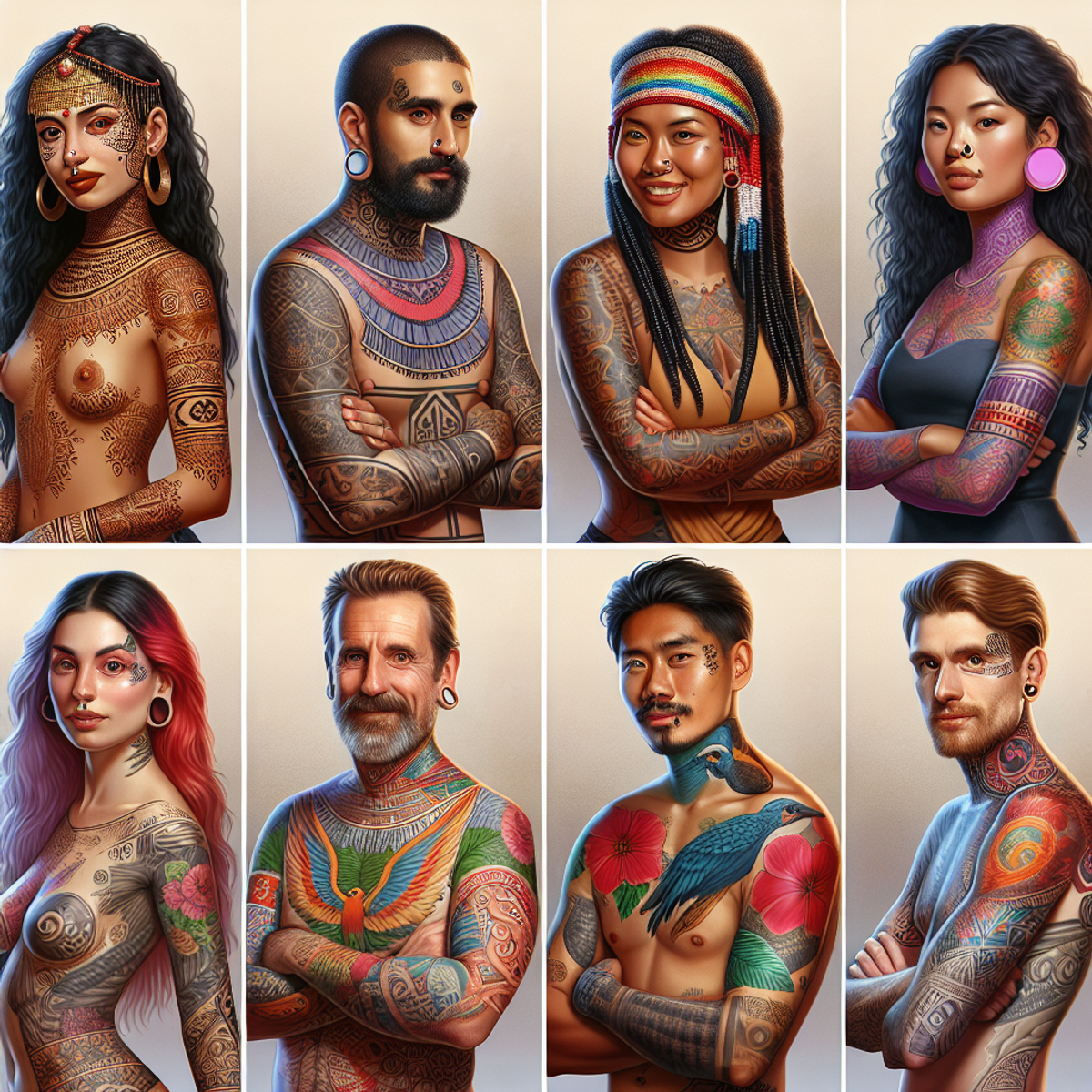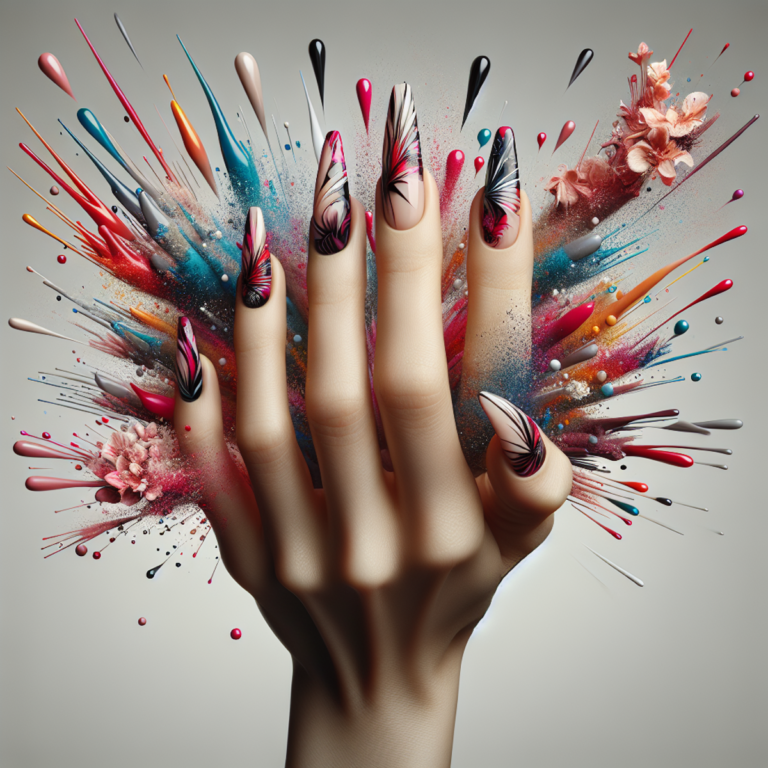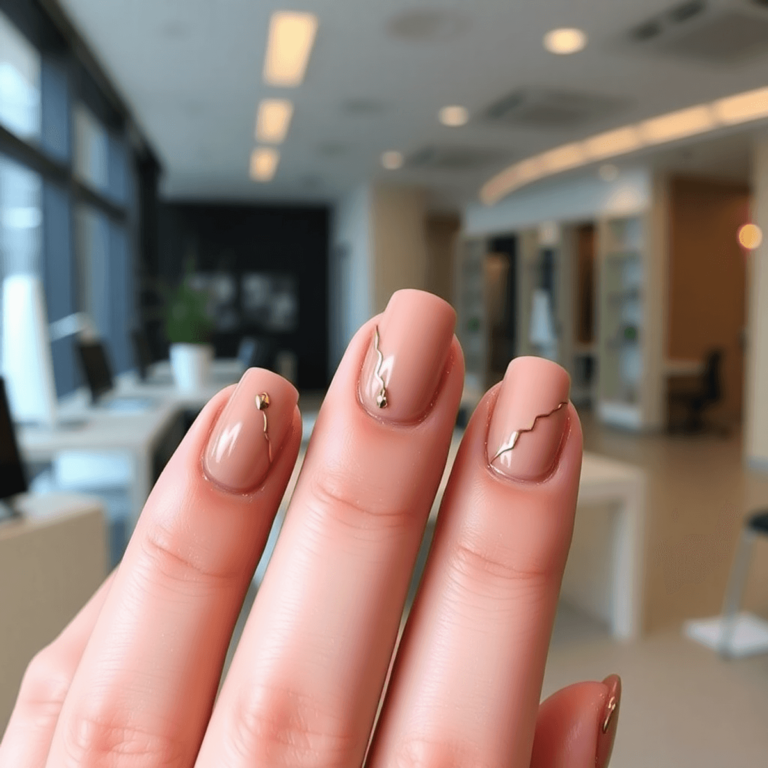How Tattoos Have Changed Over the Last 30 Years

Introduction: The Dynamic Evolution of Tattoos
The art of tattooing has a rich and diverse history, dating back thousands of years. From ancient civilizations to tribal societies, tattoos have served as symbols of identity, status, spirituality, and personal expression. However, over the past three decades, tattoos have undergone a remarkable transformation, evolving from a niche subculture to a mainstream form of art and self-expression.
Brief history of tattoos as an art form
Tattoos have been practiced for centuries across different cultures around the world. They were traditionally associated with rituals, rites of passage, and cultural traditions. In ancient Egypt, tattoos were used to signify social status and ward off evil spirits. In Japan, irezumi tattoos were seen as a mark of bravery and served as a form of punishment or identification for criminals.
Thesis statement on the evolution of tattoos over the past three decades
Tattoo culture has experienced a significant shift over the last 30 years. What was once considered rebellious or taboo has now become widely accepted and celebrated. Tattooing has transcended its traditional boundaries to become a dynamic art form that reflects changing aesthetics, societal attitudes, and technological advancements.
Key factors influencing the transformation of tattoo culture
Several key factors have contributed to the evolution of tattoos in recent decades:
- Celebrity influence: The rise of celebrity culture has played a crucial role in popularizing tattoos. Iconic figures such as musicians, actors, and athletes proudly display their inked bodies, making tattoos more socially acceptable and aspirational.
- Advancements in technology: The development of advanced tattooing equipment and techniques has revolutionized the industry. Artists now have access to a wider range of colors, tools, and styles, enabling them to create intricate designs that were previously unimaginable.
- Shifting societal attitudes: Society’s perception of tattoos has changed significantly. What was once seen as a mark of deviance or rebellion is now embraced as a unique form of self-expression. Tattoos have become a way for individuals to celebrate their identities, passions, and personal stories.
- Influence of popular culture: Movies, TV shows, and social media platforms have played a significant role in shaping the popularity and acceptance of tattoos. Reality TV shows like “Miami Ink” and “Ink Master” brought tattooing into the mainstream, showcasing the artistry and skill behind the craft.
Overall, the evolution of tattoos over the past 30 years has been driven by a combination of cultural shifts, technological advancements, and changing societal attitudes. This article will delve deeper into these transformative factors and explore how tattoos have changed throughout different eras.
The 1990s: The Rise of Tribal Tattoos and its Controversy
The 1990s witnessed a significant transformation in tattoo styles, with the emergence and widespread adoption of new trends. Among these, tribal tattoos quickly rose to prominence, becoming a favored choice for individuals seeking to express themselves through body art. However, their popularity also gave birth to a contentious debate surrounding cultural appropriation.
The Popularity of Tribal Tattoos
Tribal tattoos stood out due to their striking aesthetic, characterized by bold black lines and intricate geometric patterns. These designs held profound meaning for wearers, serving as visual representations of their strength, heritage, and personal identity. Many individuals felt a deep connection to specific cultures or communities and saw these tattoos as a means to narrate their own stories.
The Controversy Surrounding Tribal Tattoos
Nevertheless, as tribal tattoos gained mainstream popularity among non-indigenous individuals, concerns about cultural appropriation were voiced. Critics argued that adopting symbols and patterns from indigenous cultures without proper understanding or respect amounted to disrespecting the traditions and histories of those communities.
The Significance of the 1990s
The 1990s played a pivotal role in shaping the perception of tribal tattoos. It was during this decade that these designs transitioned from being niche to mainstream. This transition led to a diversification of tattoo culture, with people exploring various styles and delving deeper into the meanings behind their chosen body art.
The Impact on Tattoo Culture
The rise of tribal tattoos in the 1990s sparked crucial discussions within the tattoo community about ethical considerations and cultural appropriation. Tattoo artists and enthusiasts began reflecting upon the implications of using symbols from cultures they did not belong to, without fully comprehending their significance. These conversations marked the inception of an ongoing dialogue emphasizing the importance of respecting cultural heritage while embracing diverse artistic expressions in the realm of tattooing.
To gain a comprehensive understanding of the cultural significance of tribal tattoo designs and to navigate the fine line between cultural appreciation and appropriation, it is essential to delve deeper into this subject. One can explore resources such as this insightful article on tattoos and indigenous heritage or this blog post that offers a nuanced perspective on the cultural significance of tribal tattoo designs.
From Subculture to Mainstream: The Early 2000s Tattoo Renaissance
The early 2000s marked a significant shift in the perception of tattoos, as they transitioned from a symbol of subculture to a widely accepted form of self-expression. This transformation was largely driven by influential media exposure and the changing portrayal of tattoos in popular culture.
Shift towards tattoo’s acceptance through influential media exposure
During this period, tattoos began to gain mainstream acceptance, shedding their association primarily with fringe subcultures. They started to be viewed as a legitimate art form and a means of personal storytelling rather than symbols of rebellion or deviance.
Influence of reality TV shows like ‘Miami Ink’ on the popularity of tattooing
Reality TV shows played a pivotal role in shaping the public’s perception of tattoos. “Miami Ink,” which debuted in 2005, offered viewers an inside look at the world of tattooing, showcasing the stories behind each piece and the emotional significance they held for both the artists and their clients. This exposure not only demystified the tattooing process but also highlighted the artistry and meaning behind each design, fostering a deeper appreciation for tattoos among a wider audience.
Role of social media platforms in shaping and spreading tattoo trends
The emergence and widespread adoption of social media platforms further propelled the popularity of tattoos, allowing individuals to share their own ink, discover new artists, and stay updated on the latest trends. Platforms like Instagram provided a space for artists to showcase their work, connect with potential clients, and build thriving communities centered around tattoo culture. As a result, social media became instrumental in shaping and disseminating evolving tattoo styles and designs.
The convergence of these factors led to a significant renaissance in the world of tattoos during the early 2000s, laying the foundation for their continued evolution into the present day.
The Impact of Laser Tattoo Removal on the Tattoo Industry
The evolution of tattoos over the past three decades has not only impacted the creation of tattoos but also their removal. The advent of laser tattoo removal technology has revolutionized the process, making it easier for individuals to reconsider their ink choices. Here are the key points to consider:
1. Advancements in Laser Technology
The development of advanced laser technology has significantly improved the effectiveness and safety of tattoo removal. Newer laser systems, such as Q-switched lasers, have made it possible to target specific ink colors with minimal risk of scarring or skin damage. This has led to higher success rates in complete tattoo removal, even for complex and multicolored designs.
2. Effects of Increased Accessibility to Tattoo Removal Services
The increased accessibility and affordability of laser tattoo removal services have played a pivotal role in shaping people’s attitudes towards getting inked. Knowing that a tattoo can be removed with relative ease has reduced the fear of regret, making individuals more willing to experiment with body art. This accessibility has also contributed to the rise of trend-based tattoos, as people feel more comfortable knowing they can easily remove or modify them in the future.
These technological advancements in laser tattoo removal have not only reshaped the possibilities for those seeking to erase or modify existing tattoos but have also influenced the decision-making process for individuals considering new ink. In fact, there is a growing trend towards getting tattoos removed due to these advancements, as people no longer feel trapped by their permanent decisions.
Diversification of Styles: From Blackwork to Watercolor Tattoos
The world of tattoos has seen a lot of changes in the past few decades. Artists have become more creative and experimental, leading to a wide variety of styles and techniques. Let’s take a closer look at some of the most popular tattoo styles today:
Blackwork Tattoos
Blackwork tattoos have become increasingly popular in recent years. This style uses bold, solid black ink to create intricate patterns and designs. It draws inspiration from tribal tattoo designs and ancient cultural practices but adds a modern twist. Some common features of blackwork tattoos include:
- Geometric shapes
- Mandalas
- Intricate linework
One artist who is well-known for their blackwork tattoos is Thomas Hooper. His work combines detailed dotwork and linework to create mesmerizing patterns that cover large areas of the body. The use of negative space in blackwork tattoos adds depth and contrast, making them visually striking.
New School Designs
New School tattoos first emerged in the late 1980s as a response to traditional American tattooing styles. This style is characterized by its:
- Exaggerated proportions
- Bright colors
- Cartoonish imagery
New School tattoos often feature bold outlines, heavy shading, and a playful sense of humor. They are known for their larger-than-life characters, surreal landscapes, and imaginative storytelling.
Biomechanical Tattoos
Biomechanical tattoos are inspired by the combination of man-made machinery and natural elements. This style creates the illusion that mechanical parts are seamlessly integrated into the skin. Some common elements found in biomechanical tattoos include:
- Gears
- Pistons
- Cables
H.R. Giger, the artist behind the iconic designs in the “Alien” movie franchise, heavily influenced biomechanical tattoos. His artwork combines elements of horror and science fiction, resulting in visually stunning and thought-provoking designs.
Watercolor Tattoos
Watercolor tattoos have become incredibly popular in recent years due to their delicate and ethereal appearance. This style mimics the fluidity and vibrancy of watercolor paintings. Some key features of watercolor tattoos are:
- Soft lines
- Gentle gradients
- Vibrant splashes of color
These tattoos evoke a sense of artistry and can convey emotions through their dreamlike qualities.
The Future of Tattoo Styles
As tattoo culture continues to evolve, we can expect even more diverse styles to emerge in the future. From minimalist designs to hyper-realistic portraits, each new style pushes the boundaries of what is possible within the world of tattooing. The evolution of tattoo styles reflects the ever-changing artistic landscape and the limitless creativity of tattoo artists worldwide.
The Era of Temporary Art: Rise in Popularity of Temporary and Micro Tattoos
In recent years, temporary tattoos have become extremely popular as a way for people to express themselves and show off their style. These temporary designs are not just for kids anymore – they are now a trendy choice for adults looking to try out different tattoo styles without committing to something permanent.
At the same time, micro tattoos have also gained popularity in the tattoo world. These tiny tattoos feature intricate designs and are known for their delicate appearance. Unlike larger tattoos that may cover a significant area of the body, micro tattoos are small and subtle, often holding deep personal meaning for the wearer.
Growing Demand for Temporary Tattoos
Temporary tattoos have gone beyond being simple toys or party favors. They have evolved into a popular form of body art for people who want to experiment with different looks without the long-term commitment of a permanent tattoo. Here’s why temporary tattoos are on the rise:
- Versatility: Temporary tattoos offer endless possibilities when it comes to design, allowing individuals to explore various tattoo styles, patterns, and placements. Whether it’s trying out a tribal design on your arm or sporting a floral pattern on your ankle, temporary tattoos allow you to switch up your look as often as you’d like.
- Convenience: Temporary tattoos are an easy accessory for special occasions or events where you want to make a statement with your outfit. They can be quickly applied and removed without any hassle, making them perfect for those who like to change their look frequently.
- No Pain, No Regret: One of the biggest advantages of temporary tattoos is that they don’t involve any pain or potential regret. Unlike permanent tattoos that require needles and can be difficult to remove if you change your mind, temporary tattoos offer a risk-free way to test out different designs before committing to something permanent.
Definition and Appeal of Micro Tattoos
Micro tattoos, on the other hand, are all about subtlety and hidden meanings. Here’s what makes micro tattoos so appealing:
- Intricate Designs: Despite their small size, micro tattoos can feature incredibly detailed designs. From miniature portraits to intricate symbols, these tiny artworks showcase the skill and creativity of both the tattoo artist and the wearer.
- Personal Significance: Many people choose to get micro tattoos that hold deep personal meaning for them. These tattoos may represent a significant event, a loved one, or an important belief. By keeping these tattoos small and discreet, individuals can carry their personal stories with them wherever they go.
- Flexible Placement: While traditional tattoos are often limited to certain areas of the body, micro tattoos can be placed almost anywhere. This flexibility allows for more unique and unexpected tattoo placements, such as behind the ear, on the finger, or along the wrist.
The growing popularity of temporary and micro tattoos reflects a shift in how we view and approach tattoo art. Instead of seeing tattoos as permanent fixtures, more people are embracing the idea of temporary self-expression and exploring new avenues for creativity and individuality.
Changing Perceptions: From Stigma to Self-Expression
Over the past thirty years, there has been a significant change in how society views tattoos. What was once seen as a mark of shame is now celebrated as a way for individuals to express themselves. In this section, we will explore the reasons behind this shift in perception and its impact on people’s lives.
Shifting Societal Attitudes towards Tattoos
The Evolution of Body Art Perception
In the past, tattoos were often associated with criminal activity or rebellion, leading to their disapproval by mainstream society. However, over time, people’s understanding and appreciation of tattoos have evolved, recognizing them as legitimate forms of self-expression and artistic creativity.
Tattoos as Personal Stories
Tattoos are now seen as a means for individuals to showcase their personal stories, beliefs, and values. They serve as a medium through which people can express their identity, commemorate important life events, or pay homage to their cultural heritage. Society has become more accepting of these diverse narratives embedded in tattoo art, fostering an environment where individuals feel empowered to express themselves through body ink.
Mitigated Impact on Employment Opportunities
Past Concerns about Visible Tattoos
Employment opportunities have historically been a concern for individuals with visible tattoos. Many believed that having visible tattoos would limit their career prospects due to negative stereotypes and biases held by employers.
Changing Employer Attitudes
However, in recent times, there has been a gradual change in this perception. With the increasing prevalence of tattoos in society, employers are becoming more open-minded and understanding towards visible body art. Companies are recognizing that an individual’s skills, qualifications, and character should be the primary criteria for employment rather than their physical appearance. Consequently, studies have shown that a visible tattoo is unlikely to negatively impact job prospects.
Industries Embracing Tattoos
Moreover, certain industries and professions have even embraced tattoos as part of their culture or aesthetic. For example, the creative industries such as design agencies or artistic fields often encourage self-expression through tattoos. In these environments, tattoos can be seen as a form of artistic expression that adds to an individual’s unique personal brand.
Embracing the Ever-Changing Canvas
As we celebrate the evolution of tattoos over the past three decades, it is essential to acknowledge the changing perceptions surrounding this art form. Tattoos have transitioned from being symbols of rebellion and social deviance to becoming widely accepted forms of self-expression and storytelling. Society’s recognition of the rich narratives embedded in tattoo art has fostered an environment where individuals can embrace their ever-changing canvas with pride.
The decreased stigma associated with tattoos and the mitigated impact on employment opportunities have empowered more people to express themselves through body ink. As we move forward, it is exciting to consider how these shifting perceptions will continue to shape the future of tattoos, allowing for even greater acceptance and celebration of this unique art form.
Learn more about the social stigma surrounding tattoos in modern culture
The Future of Tattoos
As tattoos have evolved over the last 30 years, it is fascinating to consider what the future holds for this ever-changing art form. The future of tattoos will be shaped by a combination of technological advancements, cultural shifts, and social influences. Here are some predictions on how these factors will continue to shape the evolution of tattoos:
1. Advancements in Tattoo Technology
As technology continues to advance, we can expect to see new innovations in the tattoo industry. This may include advancements in tattoo machines, ink formulations, and even the possibility of bioengineered inks that change color or react to the environment.
2. Innovative Tattooing Methods
Tattoo artists are constantly pushing boundaries and exploring new techniques. In the future, we may see the emergence of new tattooing methods such as 3D tattooing, where designs appear to pop off the skin, or even nanotechnology-based tattoos that can change shape or pattern.
3. Cultural Influences
Just as cultural shifts have influenced tattoo trends in the past, they will continue to do so in the future. As different cultures become more interconnected, we may see an exchange of tattoo styles and symbols, resulting in unique fusion designs that blend traditional elements with modern aesthetics.
4. Social Acceptance and Expression
As tattoos become more mainstream and widely accepted, people will continue to use them as a form of self-expression. Tattoos may increasingly reflect personal beliefs, values, or life experiences, allowing individuals to tell their stories through their body art.
5. Digital Integration
With the rise of wearable technology and augmented reality, there may be opportunities for tattoos to integrate with digital devices. Imagine tattoos that can display information or interact with smartphones or other devices through embedded sensors or conductive ink.
The future of tattoos is exciting and full of possibilities. As technology advances and societal attitudes continue to evolve, we can expect to see even more diverse and innovative tattoo designs that reflect the ever-changing world we live in.
Embracing the Ever-Changing Canvas: Celebrating 30 Years of Tattoo Evolution
Over the past three decades, tattoos have undergone a remarkable transformation, evolving from a subculture art form to a mainstream phenomenon. The evolution of tattoos over the last 30 years has been shaped by various factors, including cultural shifts, technological advancements, and changing perceptions. Let’s take a moment to celebrate and recap the dynamic changes in tattoo culture during this period.
1. Increased Acceptance
One of the most significant changes in tattoo culture over the last 30 years is the increased acceptance and normalization of tattoos in society. What was once considered rebellious or taboo is now widely embraced as a form of self-expression and art.
2. Diversification of Styles
As tattooing gained popularity, artists began experimenting with different styles and techniques. From traditional tribal designs to intricate blackwork and vibrant watercolor tattoos, the range of artistic possibilities expanded exponentially.
3. Advancements in Technology
Technological advancements have played a crucial role in the evolution of tattoos. The introduction of laser tattoo removal revolutionized the industry, allowing people to modify or remove their tattoos more easily. Additionally, advancements in tattooing equipment and pigments have led to more precise and vibrant designs.
4. Influence of Media and Pop Culture
The rise of reality TV shows like ‘Miami Ink’ brought tattoo culture into the mainstream consciousness. These shows not only showcased talented artists but also highlighted the personal stories behind each tattoo. Moreover, social media platforms have provided a platform for artists to showcase their work and for individuals to discover new trends.
5. Changing Perceptions
Society’s perception of tattoos has transformed significantly over the past three decades. What was once seen as unprofessional or associated with criminality is now widely accepted in many professional settings. Employers are becoming more open-minded about visible tattoos, recognizing that they do not necessarily reflect an individual’s qualifications or abilities.
The evolution of tattoos over the last 30 years has been a journey of acceptance, diversification, and technological advancement. From tribal tattoos to watercolor masterpieces, tattoos have become a celebrated art form that allows individuals to express their unique stories and identities. As we look ahead to the future, it’s exciting to imagine how cultural, social, and technological factors will continue to shape the ever-changing canvas of tattoo culture.










